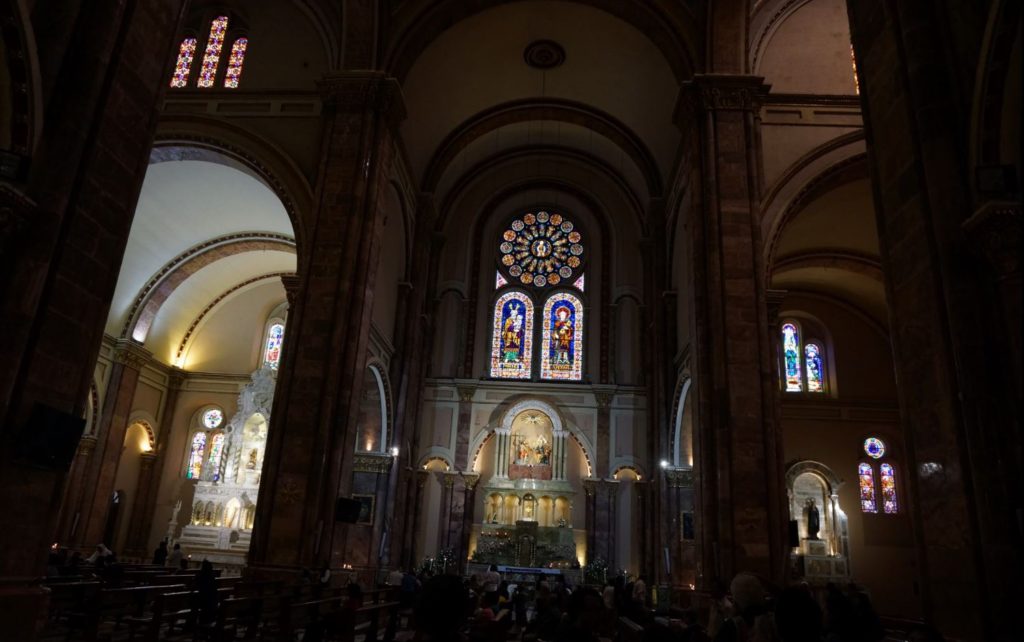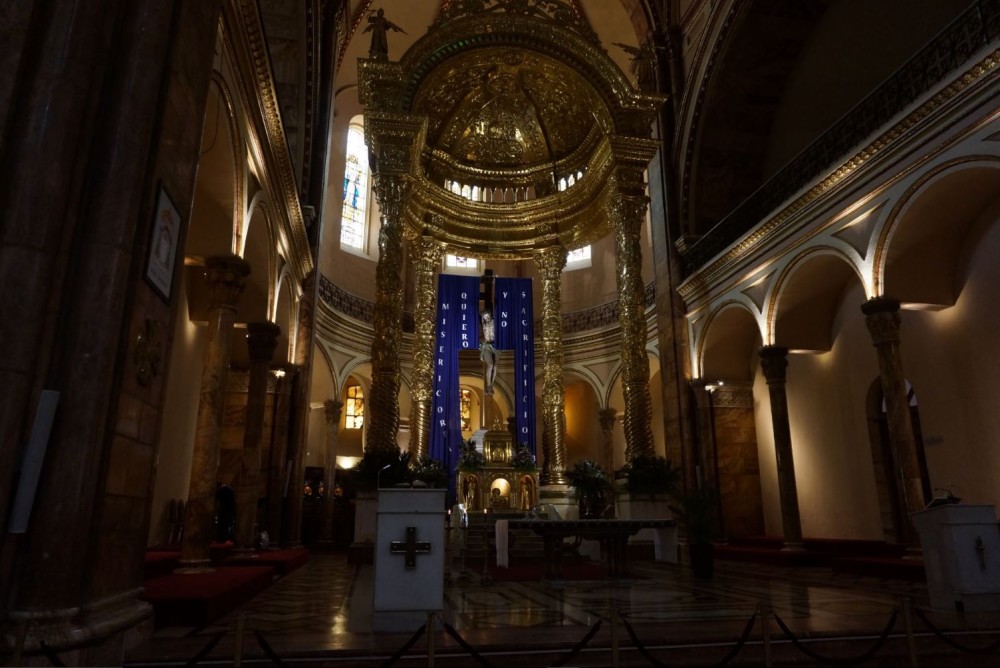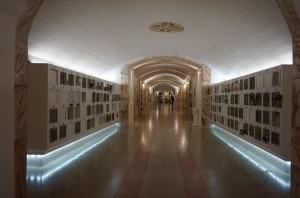[color-box color=”gray”]Every visitor or resident of Cuenca would be remiss if they didn’t experience first-hand the beauty and history that is found in the most recognizable image for Cuenca, the blue domed, Cathedral of Immaculate Conception. In this article we will cover:
The Basics; including location & hours of operation
A Brief History of The Cathedral
The 5 Top Points Of Interest including;
- The Domes
- The Main Entry Door
- The Stained Glass Windows
- The Main Altar
- The Crypts
Join me today for a written walking tour of the Cathedral as I explain the top 5 things you’ll see, in the order you’ll see them, as you explore one of Cuenca’s greatest cultural treasures and landmarks[/color-box]
The Basics:
Operating hours: Monday through Saturday 07h00, 09h30, 12h00.
Sunday 07h00, 09h30, 11h00, 12h00, 13h00 and 20h00
The Cathedral of Immaculate Conception, also known as the “New Cathedral” has become one of the most visited spots in Cuenca. It is located in front of the Central Plaza, Parque Calderon, at Benigno Malo and Mariscal Sucre Street. It’s large and dominating structure, texture and color is clearly visible from all angles of the city including the outskirts.
A Bit Of History…
- Cathedrals are created when a previous bishopric has been formed. In Cuenca, the first bishopric was created in 1787, making it the second in the country, as Quito was first. Bishop Miguel Leon Garrido made the decision to build the Cathedral in 1874 and John Baptist Sthiele, who had come to Ecuador from Germany with vast experience in architecture and construction in Europe, was asked to create the plans. This way, following the guidelines given by Bishop León Garrido, he designed a temple of colossal dimensions.
- The spot for the structure had to be carefully picked out, and after some discussion and careful planning it was decided that it would be built at the previous location of the “Iglesia de la Compañía de Jesus” a Jesuit church which was severely affected by an earthquake. It was argued whether to make use of the previous foundations in order to create the Cathedral or to tear them down altogether and start anew. In the end, because of the size and shape of the new structure, the remains of the Jesuit church had to be demolished.
- In 1884, the first stone was placed and the construction of the Cathedral progressed slowly. Most of the materials that were used were acquired locally; big stones were picked out from the river banks and due to the lack of cement, lime and sand were used to create a similar substance of strong and durable hold. It took 100 years to finally complete the structure due to its magnitude, expense and lack of resources. Interestingly enough, because of a calculation error, its construction is “unfinished” according to the original plans. The Cathedral was supposed to be much higher with two more domes intended for the original design that were supposed to be placed at the front of the Church. If it had been finished according to the original plan, the structure would not have been able to support the weight.
Top 5 Points of Interest
#1 The Domes
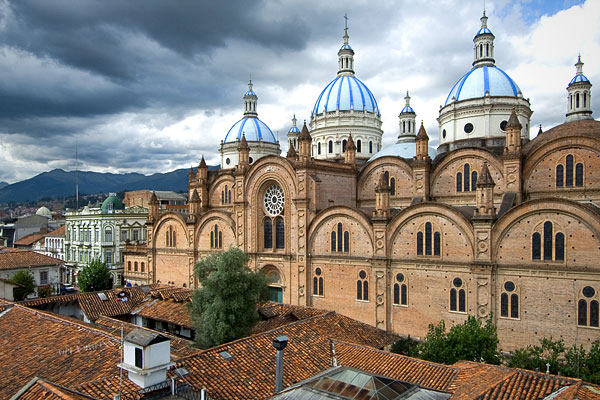
If we pay attention to the way that Cuenca is depicted in other cities or countries, the Cathedral always appears as the main symbol. It represents the largest and most important monument to Cuenca’s Catholic faith and it stands as a place of worship and pride as one of Cuenca’s most valuable architectural and cultural treasures.
 #2 The Main Door
#2 The Main Door
The massive central door was built primarily in the Renaissance style. This includes concentric Romanesque rings and on each of its sides, six smooth columns are positioned. The columns are made of marble and are decorated with both the busts of the twelve apostles and grape bunches which is a symbolic element for the Holy Eucharist, frequently seen in the interior and exterior decoration of the Temple. Classic and neo classic architecture also stand out in the main door in the style of “Boveda de cañon” (barrel vault) which gives the entrance to the Cathedral a half moon shape. Its facade is impressive and its size causes an enormous impression on anyone who looks upon it.
#3 Stained Glass Windows
The beautiful stained glass windows made of antique glass and colors of several ranges, adorn the Cathedral both inside and out. They were carefully crafted in Germany, (apse* and the one depicting Moses); in Belgium (three rosettes which look out onto Parque Calderon); and in Cuenca, (those of the aisles). The ones that can be seen as you walk the aisles of the Cathedral were armed with lead veins by the artist Guillermo Larrazábal and they predominate in the interior of the Church depicting religious images and symbols of the Catholic faith.
* From the Latin absis: “arch, vault” ; (sometimes written apsis; plural apsides) is a semicircular recess covered with a hemispherical vault or semi-dome, also known as an Exedra.
#4 The Main Altar
In the center of the temple, you will find the main altar. Its twisted columns which are made out of wood, present characteristics very similar to the one in St. Peter’s Basilica in the Vatican, as Cuenca’s altar was inspired by its complexity. While the altar in Rome kept its natural color, in Cuenca, it was decided that the altar would be covered with gold leaf which was carefully placed resulting in lasting shine and splendor that looks as though it was a recent work. Four solid Renaissance style marble bases hold equal numbers of columns, which are carved in the Baroque style. Next, the dome of the baldachin can be seen with unmistakable elements from the Renaissance period, like the emphasis on symmetry, orderly arrangements of columns, as well as the use of semicircular arches or hemispherical domes. From the edge at the top of the dome, delicate detailing can be appreciated, depicting two victorious Angels at the sides and the symbol of the cross in the center, at its peak. The statue of Jesus Christ that stands in the center of the altar was brought by Manuel de Jesus Serrano from Europe in 1960 and it was crafted by the Spanish sculptor Rafael Palmas. Cuenca’s Cathedral is one of the few in Latin America that has a baldachin of such nature and quality, both architecturally and pictorially.
#5 The Crypt
Currently, the Cathedral of the Immaculate Conception receives lots of visitors, some who wish to see the crypts that are within the Church. For those people who want to visit the Crypt, which is located in the basement area of the structure, you can find a small wooden door on the left side of the main altar. From there, 32 marble stairs will take you down to the Crypt which has been cleaned up and painted so that many tourists and locals can go and take a look inside to admire the resting place of townspeople as well as many illustrious characters like the journalist Fray Vicente Solano, the poet Remigio Crespo Toral and religious figures like Daniel Hermida, Jose Vicente Arizaga, Miguel Cordero Crespo, Tomas Toral and others. The Crypt’s construction began in 1887 but with the death of Stiehle, work was paralyzed until it was resumed in 1907. It measures 96 meters in length and 12 meters in width. According to the rector of the Cathedral, Guillermo Andrade, the Crypt was destined to be the burial place only for illustrious characters like poets, religious figures and military men but nowadays, there is only room left for priests.
Back To The Top
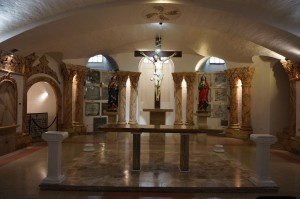
So when you visit this marvelous work of architecture, be sure to carefully admire each carefully placed stone and detail. Look for every reason why this place is often called an architectural treasure of not only Cuenca but the world, and you won’t have to look hard. The Cathedral of Immaculate Conception is truly one of the strong cultural elements that give identity to Cuenca’s community making this charming city well deserving of the honorable title of Cultural Heritage of Humanity.

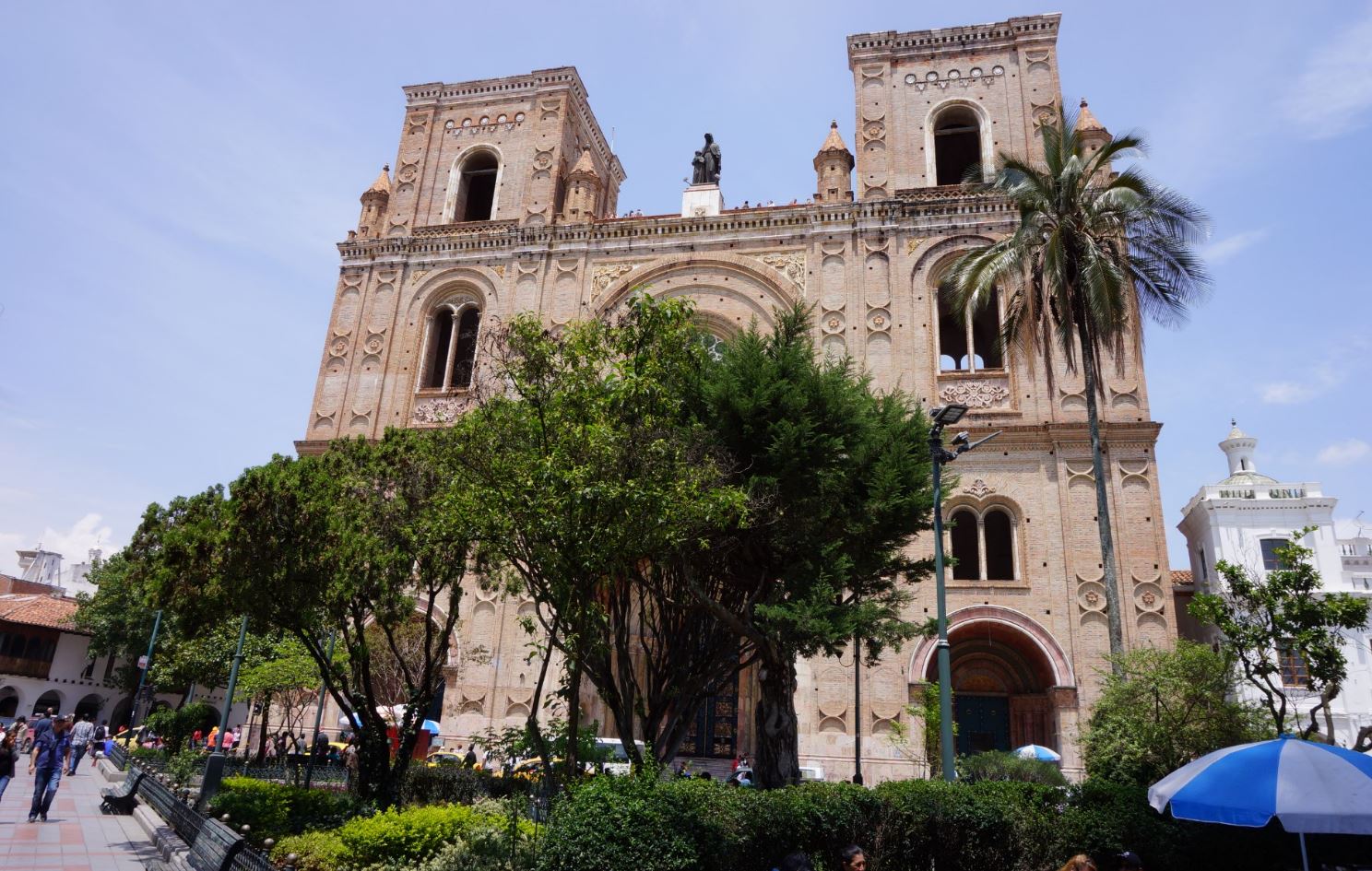

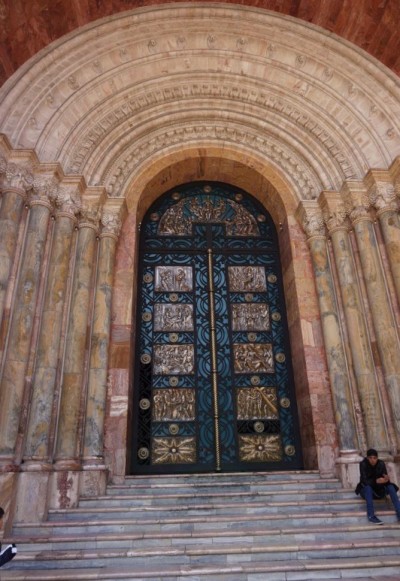 #2 The Main Door
#2 The Main Door